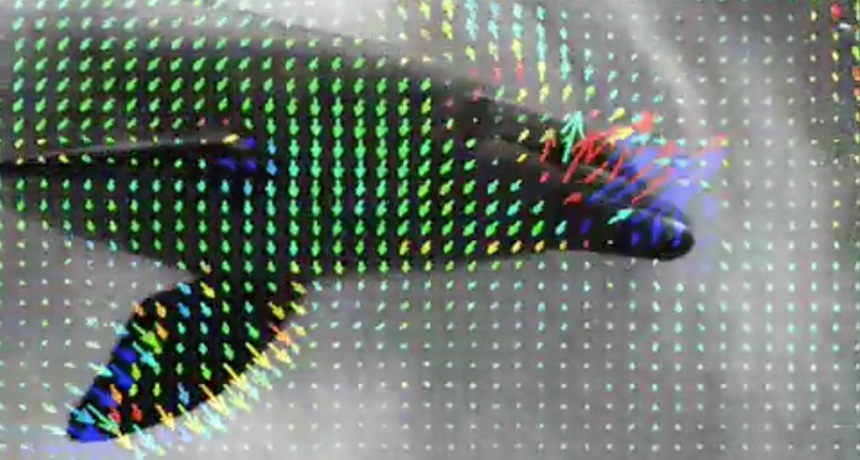Swimming dolphins don’t need to cheat
Measurement finds no sign of long-predicted lack of power

BUBBLE BURSTER Analyzing the movements of many tiny bubbles when a bottlenose dolphin swims through them has allowed researchers to reject an old notion that muscle power alone can’t explain dolphin speed.
Timothy Wei, Paul Legac and F. Fish





